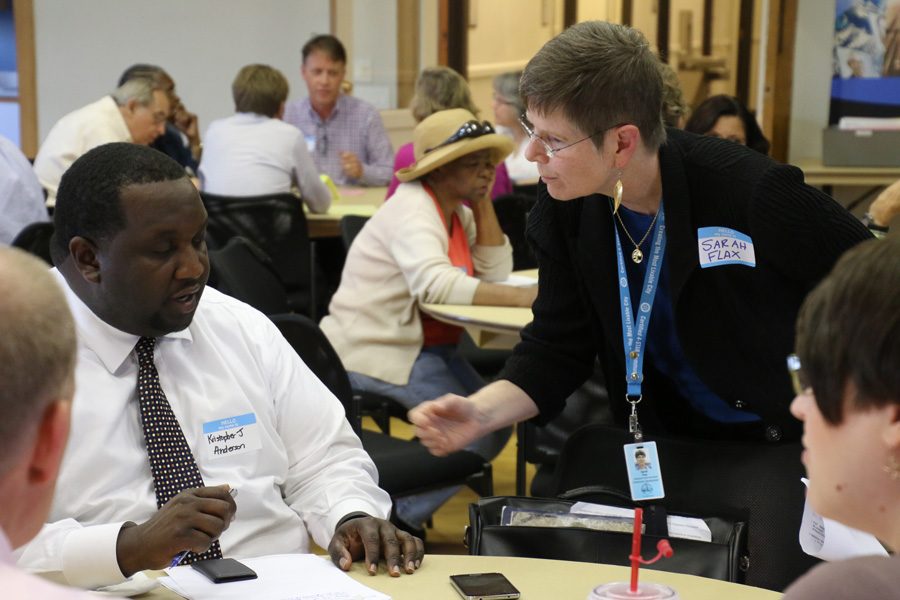Action plan tries to minimize possible damage from state and federal funding shortfalls
Daily file photo by Drew Gerber
Sarah Flax, Evanston’s housing and grants administrator, works with the community housing issues. The city is asking for public feedback on their plan for federal funding use in 2017.
October 19, 2016
The city has released its proposed 2017 Action Plan for housing funds, despite uncertainty surrounding funding and grant money.
The plan, released at the end of last week, includes the city’s goals for this year’s Community Development Block Grants, HOME Investment Partnership and Emergency Solutions Grant funding. The proposal is designed to provide affordable housing, create suitable living environments and expand economic opportunities, particularly for the city’s low-income residents.
Sarah Flax, the city’s CDBG grants administrator, said although the goals were the same, the circumstances surrounding funding has changed.
“We don’t tend to have dramatic changes (from year to year) because the goal is to develop your plan and implement it over a five-year period,” she said. “When there is so much uncertainty from other funding — the state is the biggest one — it puts such a strain on all of our non-profits…so you have an increasing need and decreasing resources.”
The budget crisis has hurt the agencies the city funds, Flax said.
“That’s our biggest challenge, just that nobody knows,” she said. “We can’t guarantee our federal funding; non-profits we’re working with have no idea what’s going to happen for state funding after the 31st.”
According to the proposed plan, city staff put the objectives together using estimated amounts for all three funding sources, as the federal budget and related appropriations for 2017 are not expected to be approved before December of this year.
The action plan sets aside some money for alley paving projects. A city program currently allows residents who want their alleys paved to coordinate with their neighbors and city staff on the project. The city and the residents split the costs.
Alley paving can help make a neighborhood more suitable for living and can be looked at from an equity perspective, Flax said.
“Where you have lower income homeowners…for them to take on that…is an additional cost that they can’t necessarily afford,” she said. “It’s a public infrastructure that really benefits the neighborhood.”
The city may also use the funds in 2017 to help with repairs at some child care locations across the city, including the Rice Child and Family Center, the Infant Welfare Society of Evanston and the Reba Early Learning Center, Flax said.
The groups must primarily serve low-to-moderate income families to be eligible for the funding, Flax said.
Additionally, the city is pursuing affordable housing initiatives outside of CDBG funding in the 2017 proposed budget. Mark Muenzer, the city’s director of community development, said at Monday’s council meeting that affordable housing meant more than just creation of new units.
Under the proposed budget, city staff would try to develop short-term or emergency solutions for affordable housing, as well as long-term options for the city’s vulnerable population.
“It is oftentimes an interim type of accommodation that the city could be involved with,” he said.
The city is asking for public feedback on the Action Plan with a deadline of Nov. 15.
Email: [email protected]
Twitter: @noracshelly


